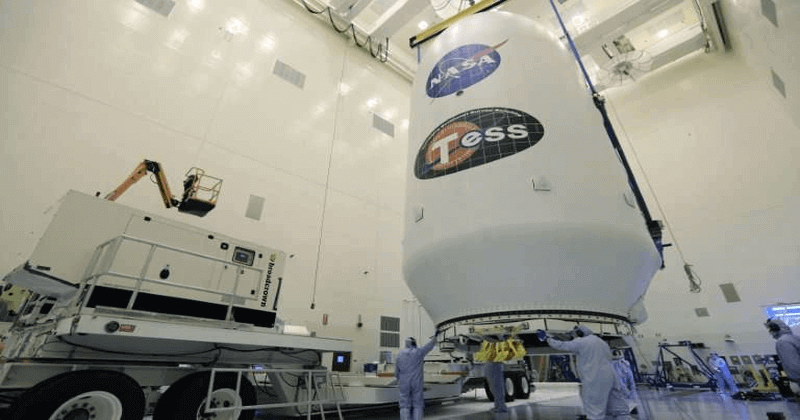
Are the others out there? Are there different habitable planets in the vast galaxy?
These are some of the many questions that a scientist ponders. Not just scientists but every other human.
NASA on Wednesday blasted off its newest planet-hunting spacecraft, TESS, a $337 million satellite that aims to scan 85% of the skies for cosmic bodies where life may exist.
After a slight hiccup, NASA’s newest satellite blasted off this morning.
.@NASA_TESS will fly four cameras developed by @MIT and @MITLL that will find thousands of new planets around other stars, called exoplanets. #TESS pic.twitter.com/9zH5eIXEZ2
— NASA_TESS (@NASA_TESS) April 18, 2018
Named TESS, or the Transiting Exoplanet Survey Satellite, the mission soared into the blue sky atop a SpaceX Falcon 9 rocket from Cape Canaveral, Florida at 06:51 pm.
The washing machine-sized spacecraft is built to search outside the solar system, scanning the nearest, brightest stars for signs of periodic dimming. These so-called “transits” may mean that planets are in orbit around them.
Equipped with plenty of hi-tech gear including four hugely powerful cameras developed at the Massachusetts Institute of Technology, throughout its journey TESS will scan 200,000 of the brightest and closest stars in our solar neighbourhood, including more than 50 Earth-sized planets and up to 500 planets less than twice the size of the Earth, collecting 27 gigabytes of data per day, NASA said.
READ ALSO: Humanity’s first mission to the Sun in July: NASA
Its discoveries will be studied further by ground- and space-based telescopes for signs of habitability, including a rocky terrain, a size similar to Earth and a distance from their sun – neither too close nor too far – that allows the right temperature for liquid water.
“The stories of these planets will continue on, long after their detection,” Martin Still, TESS program scientist, said Wednesday.
TESS will survey far more cosmic terrain than its predecessor, NASA’s Kepler Space Telescope, which launched in 2009.
Both use the same system of detecting planetary transits, or shadows cast as they pass in front of their star.
The new spacecraft will focus on nearby exoplanets, within a dozen to 100 light-years away.
Kepler’s trove of more than 2,300 confirmed planets outside our solar was impressive, but most were too distant and dim to be examined further.
“One of the many amazing things that Kepler told us is that planets are everywhere and there are all kinds of planets out there,” said Patricia “Padi” Boyd, director of the TESS guest investigator program at NASA’s Goddard Spaceflight Center.
“So TESS takes the next step. If planets are everywhere, then it is time for us to find the planets that are closest to us orbiting bright nearby stars, because these will be the touchstone system.”
The Hubble Space Telescope and the James Webb Space Telescope, scheduled to launch in 2020, should be able to reveal more about planets’ mass, density and the makeup of their atmosphere — all clues to habitability.
The initial attempt Monday was scrubbed about two hours before planned take off, so that SpaceX engineers could perform extra checks on the rocket’s navigation systems.
On Wednesday, the rocket performed flawlessly.
Less than 10 minutes after launch, the rocket’s first stage returned to an upright landing on a drone ship in the Atlantic Ocean, marking SpaceX’s 24th touchdown of a rocket booster.

Post Your Comments